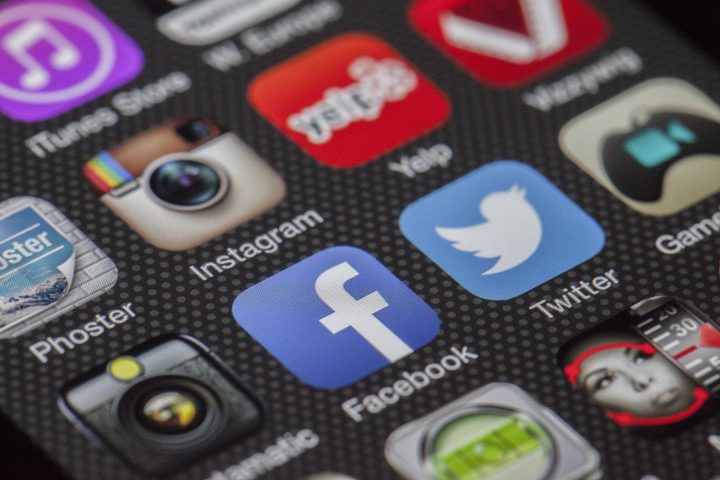Speech Examples for College Students Examples to Download
Have you ever heard a speech from a famous Hollywood stars like Oprah, Ellen DeGeneres or Viola Davis that gave you chills on the back of your neck and made you rethink your life choices? Have you ever gave a standing ovation for a wonderfully given speech? Have you ever thought of giving a speech that would give others a life-changing quotation that will be their forever quotable quotes? Don’t worry, you can always deliver your own version of a hair-raising and life-defining speech.
Research papers, thesis, essay writing and excuses are always part of your college routine but every now and then, you have to deliver a speech. Here are some college speech highlights to remember and different examples that would help you improve your speech.
1. Catch-phrase
Your catch-phrase or your opening line is one of the most crucial part of your speech because it could either catch the attention of your audience or make their heads turn around (or roll their eyes or make them not want to listen at all). Always start your speech with words that are relatable and “catchy”. There was once a speech given by a college student that started with a word “sex” and that got the class’ attention (and your attention) but the thing is that word is not at all related to the topic but you get to achieve your first goal anyways.
Always remember that this opening line would serve as their first impression, so you might as well let them remember you in a good way.
2. Always remember that your audience are college students
According to study, college students usually lose their focus when listening to a 20 minute-talk in a forum or speech. Set the time limit on whatever your speech would be. Make a short but precise and direct speech that could be heard and be remembered by the students. Also try throwing jokes every now and then.

3. Pause or Pausing
Let us all go back to the catch-phrase, “sex” — after the speaker said this, there was a few seconds of pause to let the audience process the word or to at least let them think again about the said line. “And that ladies and gentlemen got your attention” as the speaker continues.
Always remember when to pause. Do not pause for a very long time and do not pause in between the intensity of your speech as this is the part where they would actually want to listen and you don’t want to lose their attention. Also, do not pause in the part that where you will be finishing your speech as the listeners would want to hear the conclusion of it.
4. Intonation
Intonation is what we call the rise and fall of the voice when speaking and this is the part where you could put emphasis or emotions to words. Take time to practice when to raise your voice and when to put emphasis. Another trick would be raising your voice when you think and feel that your audience is losing contact.
Good intonation would actually help you and your audience to focus on your speech. Good intonation would include putting emphasis in the right “yous” in the speech. For example when Ashley Graham gave a speech to Glamour’s International Day of the Girl, she tackled the importance of knowing the beauty beyond size. She also had said in her speech, “YOU is fine” and was going on with the speech emphasizing the word “you”. “You is fine” is short but effective.
5. Hand Gesture
When your voice is rising and falling every now and then, why not add some actions and do some hand gesture? Hand gesture is a good way of showing your audience that this speech is not a joke and you want your audience to listen and look at you, and even take down notes. In relation to intonation, you could use hand gestures like pointing to the audience when saying “you!” to be more convincing. You can also use hand gestures like showing your three fingers while saying “take note of this 3 points, first…” while also snapping the fingers once in awhile just to keep the crowd awake.

The tricky part of hand gesture is sometimes using it in a wrong way. Some hand gestures can be offensive and the best way to avoid it is always know your crowd. Know that with the right amount of hand movement, you can hide the shaking of your hands from the audience.
6. Body Posture
Slouching is the one of the many bad habits we can’t just get rid off but slouching isn’t something you would do when reciting a speech. The moment you decided to slouch is the moment you are giving your audience a chance to think that you are no longer in control.
A good body posture indicates professionalism and in giving speech, you want to show your audience a high level of professionalism.
7. Structure
A good speech comes from a good structure. Structure includes the connection or the relation of the different parts or aspects of something complex. You must create a structure for your speech and surely, the rest would follow. Structure would cover your opening line, your topic, the body of the speech, conclusion and closing remarks. A structure could also serve as an outline for your speech since this is where you try to connect everything at once. You also need to look at the transition as your structure must include when and how to transition the speech from A to Z.
8. Right Location
When you are too nervous or lost, finding a right location in the classroom or stage would help. Look for a spot where the audience could see you and where you can see everyone in the audience. Also, find a spot where you could easily do a hand gesture free of objects, decorations and other display materials.
Have you ever wondered how a good public speaker does his thing confidently? Have you ever noticed them breathing in/out and changing position before they start? That is because they were standing in the right spot.
9. Choose a topic that you know
There is a numerous list of topics you can find on the internet but always remember to choose a topic that is familiar to you as well as the audience, and also a topic which interests you personally.
Here are few topics:
- Poverty. This is an easy topic since poverty is still prevalent around the globe. You may also want touch on subjects like debts since this causes poverty and college students have school loans/debts to pay. On the other hand, you can use poverty as a topic use to scare your audience if that they don’t finish their studies or they don’t work, they will end up broke (not unless they’re Bill Gates or Steve Jobs).
- Effects of US’ Foreign Policy: “Pivot to Asia”. This is a smart topic but would require time for research. This is also a topic that will touch on economy, culture, and the effects of western policies to the east, and vice versa.
- The Means of Social Media. This is an easy topic since almost everyone is on social media. This is like an every dose for college student — a means of escape. You can actually start your speech by taking a selfie and posting it online then announcing “I just posted a selfie on Facebook but what difference does it make?” This topic is very much relatable to the younger generation who are more adept and exposed to social media.

- Accessibility to Education. This topic would include online education or satellite campuses wherein you can go to school anywhere and anytime you want. You could actually want to open your with lines like “Have you ever wanted to a class on top of the mountain?” Everyone just wants to go here and there and do everything all at once. Why not open a topic that would give interest to both faculty and students. These people always claimed to be busy all the time, give them a topic that would give them their imagination come to words.
There are other topics you could find on the internet but these are just a few you can choose.
Don’t forget to relax and remember the tips when doing a speech mentioned above. If ever you have to do it over again, it will be much easier and probably be less nerve wracking.


